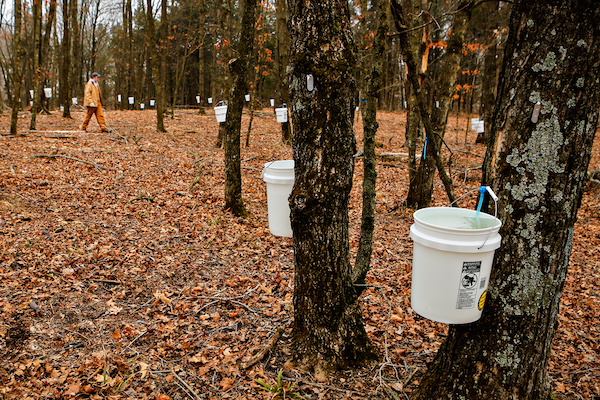A dismal production year and a surge in demand has the world on the verge of a maple syrup crisis. Luckily for pancake lovers everywhere, some smart folks up in Canada thought it was a good idea to have a backup plan in place for just this sort of situation. The Federation of Quebec Maple Syrup Producers (FPAQ) is releasing +50 million pounds of the sticky, sweet sap onto the international market from the group’s strategic maple syrup reserves.
The Canadian group often referred to as the “OPEC of maple syrup,” created the reserves in 2000 to help stabilize the wildly fluctuating maple syrup market. Quebec’s roughly 7,300 syrup producers actually account for some 77% of the world’s total supply. Producers formed FPAQ in 1989, which has tightly regulated the production and marketing of Quebec’s maple syrup ever since. Quebec syrup farmers sell to FPAQ, which in turn negotiates prices and sells to bulk buyers. FPAQ stockpiles the the annual surplus into what is officially known as the International Strategic Reserve (ISR), also referred to as the Global Strategic Maple Syrup Reserve. For what it’s worth… I’ve often thought we could do the same with our crop farmers here in the US if we all joined forces, i.e. something like a corn grower’s OPEC.
Quebec syrup farmers harvested around 133 million pounds of the sticky stuff in 2021, which was lower than the 175 million in 2020 but is actually considered a pretty average year. However, sales were up over +20% this year thanks in part to strong demand from the U.S., where maple syrup production took a hit this year because of unseasonably warm weather, according to Adam Wild, a specialist with the Cornell Maple Program. What was produced contained a “drastically lower” concentration of sugar, he added. Whereas a typical ratio of sap to syrup is 40 parts to 1, this year it was 50 parts to 1 or higher. Previous growing season conditions and winter weather leading up to maple season could have also had an effect. Trees in both the U.S. and Canada this year were stressed from a lack of moisture, as well as a lack of the freezing and thawing cycles.
Sugar maples are the most common species for syrup and they grow almost exclusively in the northern U.S. and the Canadian southeast. As winter approaches, the maple trees (like all deciduous trees) stop growing and begin to store starch in their trunks and roots. These starches remain stored until the outside temperature reaches 40 degrees Fahrenheit. This signals to the tree that spring is coming, so the starches are then transformed into sugar, which passes into the sap. The temperature increase creates pressure in the tree, which causes the sap to flow. This “rising” of the sap is when it is best collected.
It can be an incredibly short window though, varying from just a few hours to several days. And as with all crops, output is entirely dependent on Mother Nature’s cooperation. You need cold nights followed by warm days to make the sap run. Bumper sap years also depend on the growing season of the previous summer to store as much carbohydrates as possible in the form of starch. The amount of sugar (sucrose) in the springtime sap depends on many factors including tree genetics, leaf mass, site conditions, amount of sun the previous growing season, and overall tree health.
Holes are typically drilled into the maple trees to collect the sap, which is heated to remove the water content before it is processed into syrup. It takes about 40 gallons of sap to make one gallon of maple syrup because sap is 98% water. When this water is boiled off, it leaves behind the sticky syrup that is even more valuable than oil – a barrel of maple syrup from Quebec’s strategic reserves is currently trading around $1,970. Oil, by comparison, has only briefly managed to climb over +$80 a barrel this year. (Sources: CBC, NPR, Washington Post)







